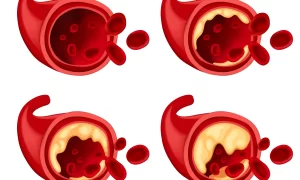 In the field of medicine, understanding the underlying factors that contribute to various health conditions is crucial for effective diagnosis and treatment. When it comes to thrombosis, a condition characterized by the formation of blood clots within blood vessels, Virchow’s Triad plays a pivotal role in shedding light on its causes.
In the field of medicine, understanding the underlying factors that contribute to various health conditions is crucial for effective diagnosis and treatment. When it comes to thrombosis, a condition characterized by the formation of blood clots within blood vessels, Virchow’s Triad plays a pivotal role in shedding light on its causes.
First proposed by the eminent German physician Rudolf Virchow in the 19th century, Virchow’s Triad highlights three fundamental components that contribute to thrombosis:
- stasis,
- hypercoagulability,
- and endothelial damage.
Today, we will delve into each element of the triad and explore its significance in triggering thrombosis.
1. Stasis: The Calm before the Clot
Stasis refers to the slowing or stagnation of blood flow within blood vessels. This can occur for various reasons, such as prolonged immobility during long journeys or extended bed rest after surgery.
When blood flow slows down, the risk of clot formation increases. Additionally, certain medical conditions, such as heart failure or varicose veins, can disrupt the natural flow of blood, promoting stasis.
Understanding the role of stasis in Virchow’s Triad allows healthcare professionals to identify patients who are more susceptible to thrombosis and implement preventive measures.
2. Hypercoagulability: The Clotting Culprit
Hypercoagulability refers to a state in which the blood has an increased tendency to clot. Normally, blood clotting is a vital mechanism that helps stop bleeding from wounds.
However, when the blood’s clotting factors become imbalanced, it can lead to the formation of unnecessary and harmful clots. Hypercoagulability can be caused by genetic factors, hormonal changes, certain medications, or underlying medical conditions.
Identifying and addressing hypercoagulability is crucial in reducing the risk of thrombosis, particularly in high-risk patients.
3. Endothelial Damage: When the Lining Suffers
The endothelium is the inner lining of blood vessels, and its integrity is vital for smooth blood flow. When the endothelium becomes damaged due to injury, inflammation, or other factors, it can trigger the activation of platelets and clotting factors, leading to thrombosis.
Common culprits behind endothelial damage include smoking, hypertension, and high levels of cholesterol in the blood.
By understanding the significance of endothelial damage in Virchow’s Triad, healthcare professionals can emphasize lifestyle modifications and treatments that promote endothelial health.
Navigating Thrombosis with Virchow’s Triad
Virchow’s Triad remains an indispensable framework for comprehending the complex interplay of factors that lead to thrombosis. By recognizing the significance of stasis, hypercoagulability, and endothelial damage, healthcare professionals can tailor their interventions to effectively prevent and manage thrombotic events.
Equipped with this knowledge, patients can also take proactive steps to reduce their risk of thrombosis through lifestyle modifications and appropriate medical guidance.
As medical research advances, further understanding of Virchow’s Triad may pave the way for more targeted and precise treatments, ultimately enhancing the quality of patient care in the realm of thrombosis management.
Picture Credit: Freepik
